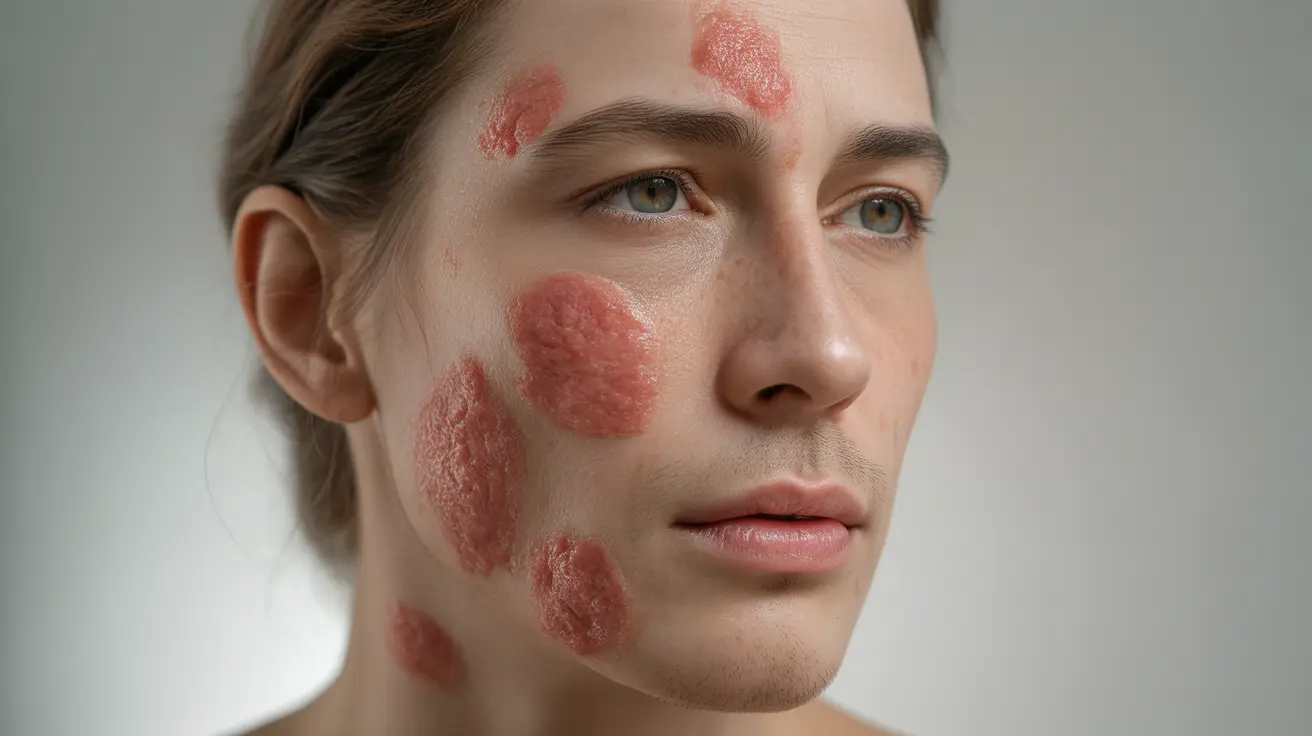Living with psoriasis on your face can be both physically uncomfortable and emotionally challenging. This chronic skin condition affects delicate facial skin, requiring special care and targeted treatment approaches. Understanding the unique aspects of facial psoriasis is crucial for managing symptoms effectively and maintaining your quality of life.
While psoriasis commonly appears on other parts of the body, facial involvement presents distinct challenges due to the visibility and sensitivity of facial skin. This comprehensive guide explores the symptoms, diagnosis, treatment options, and management strategies specifically for facial psoriasis.
Understanding Facial Psoriasis and Its Symptoms
Facial psoriasis typically manifests as red, scaly patches that can appear anywhere on the face, including the forehead, around the eyes, nose, and upper lip areas. These patches may be:
- Reddish or salmon-colored patches with silvery-white scales
- Small, round spots (particularly common on the hairline)
- Dry, cracking areas that may become itchy or painful
- Patches that can feel tight or uncomfortable when expressing facial movements
The condition may also affect the eyebrows, causing flaking and redness, or extend into the ear area. Unlike psoriasis on other body parts, facial patches tend to be thinner and less scaly due to the nature of facial skin.
Diagnosis and Differentiation
Diagnosing psoriasis on the face requires careful evaluation by a healthcare provider, typically a dermatologist. The diagnostic process usually involves:
- Physical examination of the affected areas
- Review of medical history and family history
- Sometimes, a small skin biopsy if the diagnosis is unclear
Professionals must differentiate facial psoriasis from similar conditions such as seborrheic dermatitis, eczema, or rosacea, as treatment approaches vary significantly for each condition.
Treatment Approaches for Facial Psoriasis
Topical Treatments
Due to the sensitive nature of facial skin, treatment must be carefully selected. Common topical options include:
- Low-potency corticosteroids (for short-term use only)
- Vitamin D derivatives
- Tacrolimus or pimecrolimus (calcineurin inhibitors)
- Specialized moisturizers and emollients
Systemic Treatments
For moderate to severe cases, systemic treatments might be necessary:
- Oral medications like methotrexate or cyclosporine
- Biologic medications for severe cases
- Oral retinoids (used with caution due to side effects)
Managing Triggers and Preventing Flare-ups
Identifying and avoiding triggers is crucial for managing facial psoriasis. Common triggers include:
- Stress and anxiety
- Harsh weather conditions
- Certain skincare products
- Lack of moisture
- UV exposure without protection
Developing a consistent skincare routine and lifestyle modifications can help prevent flare-ups:
- Use gentle, fragrance-free cleansers
- Apply moisturizer regularly
- Protect your face from sun exposure
- Manage stress through relaxation techniques
- Maintain a healthy diet and lifestyle
Frequently Asked Questions
What are the most common symptoms and signs of psoriasis on the face?
The most common signs include red, scaly patches, particularly around the hairline, eyebrows, and nasolabial folds. These patches may be thinner than psoriasis elsewhere on the body but can still cause significant discomfort and scaling.
How is facial psoriasis diagnosed and differentiated from other skin conditions?
Dermatologists diagnose facial psoriasis through physical examination, medical history review, and sometimes skin biopsies. They look for characteristic features that distinguish it from similar conditions like seborrheic dermatitis or eczema.
What are the safest and most effective treatment options for psoriasis on facial skin?
The safest treatments include low-potency topical medications, calcineurin inhibitors, and specialized moisturizers. For severe cases, phototherapy or systemic medications may be recommended under close medical supervision.
What triggers or worsens facial psoriasis and how can flare-ups be prevented?
Common triggers include stress, harsh skincare products, weather changes, and UV exposure. Prevention involves using gentle skincare products, maintaining good skin moisture, protecting from sun damage, and managing stress effectively.
Can light therapy or biologic medications be used to treat moderate to severe facial psoriasis?
Yes, both light therapy and biologics can be effective for moderate to severe facial psoriasis. However, these treatments must be carefully monitored by a healthcare provider, as facial skin requires special consideration regarding exposure and dosing.




